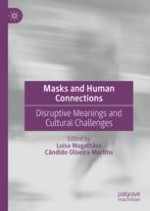Abstract
Adult toy play is often disguised under euphemisms such as hobbying, collecting, or “dolling” (Heljakka, 2018). Whereas these terms describe toy use as a leisure pursuit interested in engagement with playful objects, they fail to grasp the psychological and philosophical depth of mature players’ interaction with toys with a face, or so-called character toys—dolls, action figures and soft toys (Heljakka, Principles of adult play(fulness) in contemporary toy cultures: From Wow to Flow to Glow. Doctoral dissertation, Aalto University, 2013). The chapter at hand addresses these toys from the theoretical perspectives of adult toy play with a particular focus on play with identities. Previous research suggests how adults use toys in complex ways not only to escape the burdens of everyday life and to enter the sphere of fantasy, but also to connect with real world phenomena and to explore their own identities. Photoplay (or, toy photography, see e.g., Heljakka, Aren’t You a Doll. Toying with Avatars in Digital Playgrounds. Journal of Gaming and Virtual Worlds, 4(2), 153–170, 2012), a popular material, digital and socially shared play pattern unmasks the potential of toys as the belles and beasts as part their players’ identities through visual storytelling. As demonstrated in the chapter, a review of studies (interviews, analyses of photoplay, and participatory observation of in-situ toy play) conducted with adult toy players during the past decennium reveals how toys come to function as extensions, avatars, and activists in human identity play, making adult aspirations and actions to explore the human condition visible. The chapter concludes with the observation that in times, in which uses of media technology and online sharing blur the lines between reality and artificiality, toys as masks incorporate powerful potential and agency in uncovering aspects of their players true identities, embodying, mirroring, as well as unmasking the human—and humanity—behind the toys.
